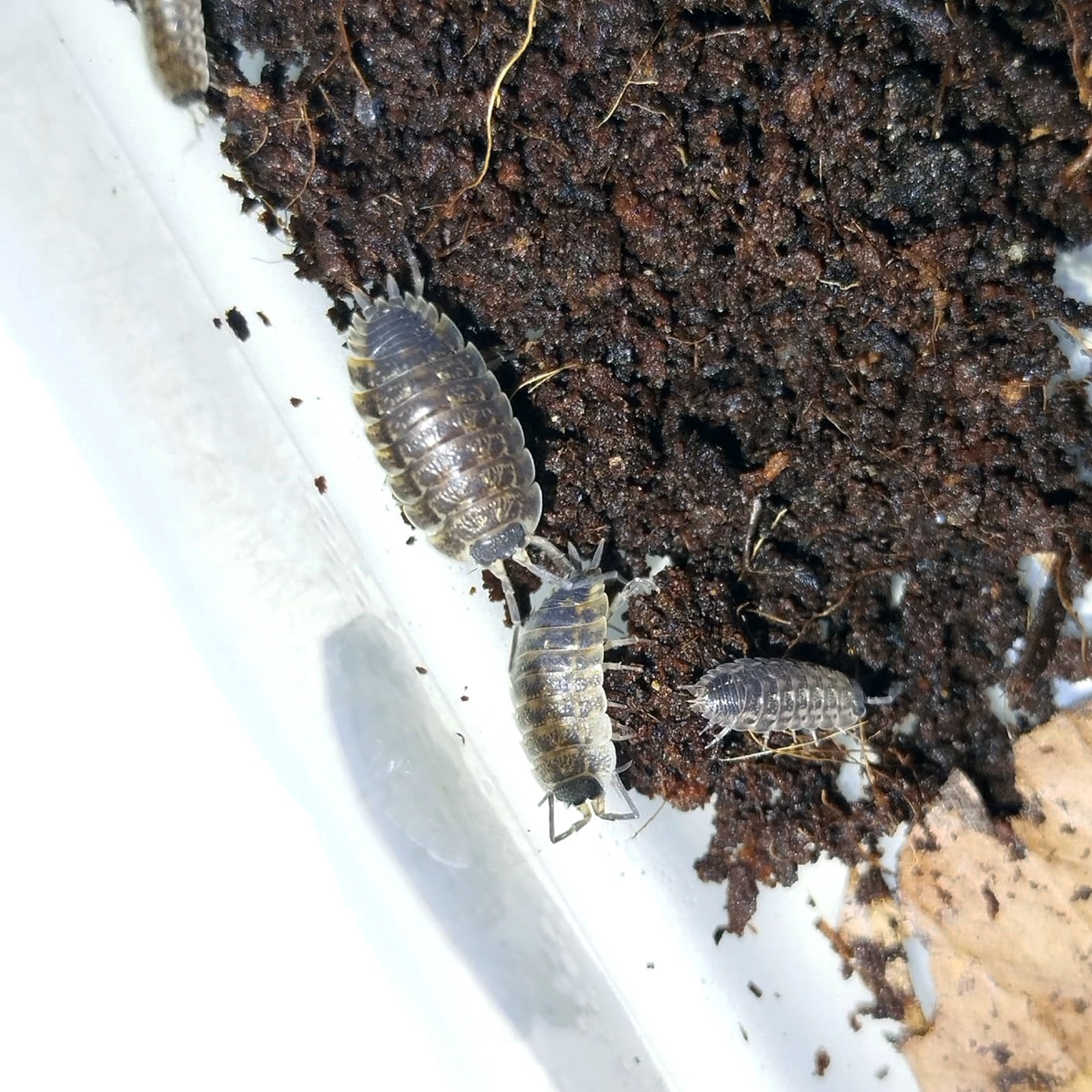
Armadillidium granulatum
0,50€ – 4,00€Price range: 0,50€ through 4,00€

Armadillidium peraccae
1,40€ – 12,00€Price range: 1,40€ through 12,00€
Porcellio spinicornis
0,50€ – 4,00€Price range: 0,50€ through 4,00€
Introduce Porcellio spinicornis into your bioactive terrarium. This terrestrial isopod is an effective natural recycler, ideal for breaking down organic matter and improving the quality of the substrate. Hardy and adaptable, it is key to maintaining a healthy and balanced environment.
SKU:
N/A
Categories: Arthropods, Isopods, Porcellio
Description
Technical sheet of the isopod: Porcellio spinicornis
Scientific Name: Porcellio spinicornis
Taxonomic Classification:
- Kingdom: Animalia
- Phylum: Arthropoda
- Class: Malacostraca
- Order: Isopoda
- Family: Porcellionidae
- Genus: Porcellio
- Species: Porcellio spinicornis
Common Name: Terrestrial isopod, woodlouse, pill bug (although it doesn’t fully roll up).
General Description:
- Size: Between 10 and 15 mm in length.
- Color: Typically dark gray or brown in color, with possible greenish or yellowish hues.
- Body: The body is dorsoventrally flattened, composed of rigid, articulated segments, providing some flexibility.
- Antennae: Possesses two pairs of antennae. The second pair is long and oriented forward, while the first pair is much shorter.
- Particularity: The name spinicornis refers to the spiny projections found at the tips of its antennae.
Habitat:
- Distribution: Mainly distributed throughout Europe but has been introduced to other parts of the world.
- Environment: Inhabits humid areas such as forest floors, under rocks, logs, and leaf litter. It can colonize urban areas, living in gardens, basements, and other moist zones.
Feeding:
- Diet: Detritivore, feeding on decaying organic matter such as dead leaves, rotting wood, and other plant debris.
- Ecological Importance: Plays a crucial role in nutrient cycling by breaking down organic material in ecosystems.
Behavior:
- Activity: Primarily nocturnal, as it seeks shelter in dark, damp places during the day to avoid desiccation.
- Social Behavior: Lives in small colonies under suitable conditions. Prefers high-humidity areas to maintain body hydration.
Reproduction:
- Life Cycle: Females carry the eggs in a ventral chamber called a marsupium, where the embryos develop until hatching.
- Lifespan: Can live between 1 and 2 years, depending on environmental conditions.
Adaptations:
- Respiration: Has pseudotracheae on its abdominal surface that allow it to breathe, but it requires humid environments to keep these structures functional.
- Defenses: Though it doesn’t roll up entirely like some woodlice, it can hide in small crevices to avoid predators.
Additional information
| Options |
1 unit ,10 units |
|---|
Related products
Dola larvae (pachnoda)
5,00€
there is stock
Dola larvae (Pachnoda): the nutritious and easy-care solution for your pets! With their diet rich in fruits and vegetables, they are an excellent source of protein and contain virtually no fat ideal for ants, arthropods, reptiles and amphibians. Choose the best for your pets!!
Select options
This product has multiple variants. The options may be chosen on the product page
Grammostola porteri (Rosea)
22,00€
there is stock
Discover the fascinating company of the Grammostola porteri tarantula! With its unique beauty and adaptability to different terrariums, this tarantula is perfect for beginners in the world of exotic pets. Dare to explore the magic of nature in your home with this captivating tarantula. 🕷️
Select options
This product has multiple variants. The options may be chosen on the product page
Cubaris jupiter
there is stock
Gromphadorhina portentosa
1,50€ – 12,00€Price range: 1,50€ through 12,00€
there is stock
Discover the fascinating Madagascar hissing cockroach! Perfect as an exotic pet or for research projects. Its peculiarity and ease of care make it a unique choice. Dare to explore the world of these incredible creatures!
Select options
This product has multiple variants. The options may be chosen on the product page
Phyllocrania paradoxa
15,00€
Sold out
Armadillidium klugii
3,00€ – 12,50€Price range: 3,00€ through 12,50€
Sold out
Select options
This product has multiple variants. The options may be chosen on the product page
Armadillidium maculatum
2,50€ – 10,00€Price range: 2,50€ through 10,00€
there is stock
Select options
This product has multiple variants. The options may be chosen on the product page























